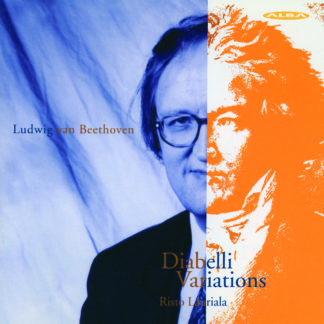Kuvaus
Julia Korkmanin konseptialbumi tutkii rikollisuutta ja oikeusprosesseja musiikin kautta, inspiroituen oikeuspsykologian ja kriminologian tutkimuksesta. Kappaleissa käsitellään muun muassa oikeusmurhia, lähisuhdeväkivaltaa, vääriä tunnustuksia, silminnäkijätodistuksia, vainoamista ja petoksia. Kappaleet heijastavat myös rikollisuudelle altistavia psykologisia ja sosiaalisia riskitekijöitä.
Songs for the Criminal Record: Notes from the Singer
Bang bang, my baby shot me down. This collection of songs draws inspiration from the intriguing research of legal psychology and criminology. As true crime continues to captivate audiences, the fascination with crime and violence seems almost ingrained in our DNA—perhaps it is a fundamental human survival instinct to be on alert for danger. But while our primal fear may have once helped keep us safe, today, it can be misleading. Despite Europe on the whole being safer than ever, the media’s relentless coverage of crime often leaves us feeling more threatened than we really are. Take Finland, for example: a police report reveals that the people most afraid of international organised crime are elderly women living in rural areas—a group that’s incredibly unlikely to be targeted.
Over the past few decades, miscarriages of justice have drawn significant attention, with high-profile cases in the U.S. and Europe revealing common factors behind wrongful convictions. Projects like the Innocence Project in the U.S. and the newly launched EUREX (the European Registry of Exonerations) have identified the most frequent causes: mistaken eyewitness identifications, misinterpretation of evidence, false accusations, and coerced confessions.
These issues aren’t new. Take, for example, the traditional Finnish folksong “Balladi Olavinlinnasta” (Ballad from Olavinlinna Castle), which tells the tragic tale of a young maiden who takes the blame for a crime committed by her lover, paying with her life. As the ballad goes, “She took her secret to her grave; the culpable was the man she loved.” Modern research on false confessions, where individuals admit to crimes they didn’t commit, highlights a similar pattern. Often, innocent people take the fall for other persons – family members, loved ones, or, in the case of organised crime, for higher-ups in the criminal hierarchy. Additionally, coercive police interrogation tactics play a significant role in extracting false confessions, further distorting justice and implying a risk for wrongful convictions.
Around the world, people are being sent to prison based on eyewitnesses identifying them in line-ups. But these identifications can sometimes be wrong. Mistaken identifications can happen for various reasons: sometimes the police conducting the investigation set up the line-up in a biased way, with the suspect being the only one who fully matches the description of the culprit. In other cases, officers may—intentionally or not—hint at who the witness should focus on.
A major issue is that when people are presented with a photo line-up, they feel a natural urge to pick someone, usually the person who looks most like the culprit in their memory. As the song goes, “It’s the wrong face, but it’s such a lovely face, that it’s all right with me.” This human tendency, coupled with flawed procedures, can lead to innocent people being wrongfully convicted.
At the heart of many miscarriages of justice lies confirmation bias—the human tendency to seek out information that supports our existing beliefs. This mental shortcut can lead investigators and fact-finders in criminal cases to overlook or dismiss evidence that contradicts their initial suspicions. Prejudices and racism can also play a significant role, skewing perceptions and contributing to wrongful convictions.
An example of such prejudice in the U.S. legal system is the case of the two Italian immigrants Nicola Sacco and Bartolomeo Vanzetti, who were sentenced to death in 1927. Decades later, on August 23, 1977, the 50th anniversary of their executions, Massachusetts Governor Michael Dukakis declared the date Nicola Sacco and Bartolomeo Vanzetti Memorial Day. After reviewing the case, Governor Dukakis concluded that Sacco and Vanzetti had not received a fair trial. He urged the public to “reflect upon these tragic events and draw from their historic lessons the resolve to prevent the forces of intolerance, fear, and hatred from ever again uniting to overcome the rationality, wisdom, and fairness to which our legal system aspires.”
The verdict against Sacco and Vanzetti sparked massive protests both in the U.S. and Europe, and their story has been immortalised in film and music. The renowned Italian composer Ennio Morricone and folk singer Joan Baez paid tribute to them in the song “Here’s to you, Nicola and Bart”. May this version be dedicated to all those who have received wrongful sentences.
Stalking is a grave issue impacting countless victims worldwide, from celebrities and politicians to everyday individuals, and a prevalent form of intimate partner violence. The advent of new technologies has unfortunately made stalking more effective and challenging for authorities to control. Perpetrators often have distorted views of their behaviour, justifying their controlling actions as acts of love or measures to ensure the victim’s safety.
In 1982, Sting wrote the song “Every Breath You Take” following the end of his first marriage. Sting has described it as “very, very sinister and ugly,” noting that people have misunderstood its true meaning, interpreting it as a gentle little love song. The song – with the rather chilling lyrics “Every breath you take, every move you make, every bond you break, every step you take – I’ll be watching you”—has even been played at weddings. “Well, good luck,” Sting remarked in response to this.
Victims of intimate partner violence and coercive control may also develop distorted perceptions of both the perpetrator’s actions and their own role, often blaming themselves for the violence. The song “He Hit Me (And It Felt Like a Kiss)” by Gerry Goffin and Carole King illustrates these distortions. The song was written after the songwriters discovered that their babysitter had been severely abused by her boyfriend. She, however, downplayed the violence, attributing it to her boyfriend’s affection. The song depicts her mindset in a terrifying way: “If he didn’t care for me, I could have never made him mad. So when he hit me, I was glad”.
Victims of violence within the family or intimate relationships often face barriers to disclosing their experiences. Alongside psychological control and distorted perceptions of their situation, they worry about the repercussions for themselves or their loved ones, feel shame about their victimisation, or lack trust in the criminal justice system—or experience a combination of these factors. Similar to the victim depicted in Suzanne Vega’s song “Luka,” some make up excuses for bruises or other signs of violence. “Yes I think I’m okay, I walked into the door again. If you ask that’s what I’ll say – and it’s not your business anyway.”
Some victims disclose their abuse only years after it occurred, which is particularly common among children who may not fully understand their experiences at the time. Recent decades have revealed shocking abuses in religious and educational settings, as well as against indigenous children and families. In cases where court proceedings are delayed for many years, victims often find themselves “digging in the dirt,” as phrased by Peter Gabriel. His lyrics highlight the need for support during this process: “Digging in the dirt. Stay with me, I need support – I’m digging in the dirt, to find the places I got hurt, open up the places I got hurt.” Victim services play a crucial role in providing this support, helping individuals navigate the painful process of recounting their experiences in lengthy legal proceedings when they might prefer to forget them.
The enormous popular interest in crimes and their perpetrators is evident when browsing streaming services today, but this fascination is not a new phenomenon. One of the early serial killers to capture public imagination was Jack the Ripper, whose identity remains unknown. Similarly, Mack the Knife—known as Mackie Messer in the original German version —was a London-based serial killer, though a fictional one. The song is a “moritat,” a mediaeval murder ballad that recounts crimes and murders. Despite its grim subject matter, the song has become a beloved standard, with a tune that sounds much more cheerful than the dark theme would suggest.
Not all crime songs glorify perpetrators or present them in a positive light. For instance, “In the Ghetto,” originally performed by Elvis Presley, poignantly describes how adverse childhood experiences and poverty can seed a criminal trajectory later in life. While not all criminal behaviour can be attributed to childhood factors, and most individuals with difficult upbringings do not become involved in crime, research indicates that violence and poverty experienced during childhood are risk factors for various social problems, including criminality.
One historical figure who experienced such a challenging childhood was Hallin Janne – Janne from the small Finnish town of Halli. Known as one of Finland’s most notorious criminals, Janne had a bad temper from an early age. During his upbringing in the 1850s, his parents, like many others at the time, employed harsh physical punishments to discipline their many children, which likely exacerbated Janne’s problematic behaviour, as modern developmental psychology research suggests.
Janne got into gambling at an early age and although handsome and a good singer, popular among the women, he had a temper which he could not control and which contributed to his criminal life. In 1867, at the age of 21, he and an accomplice killed the local postman, who was carrying a large sum of money (“postista hengen otti”). They were initially sentenced to 40 lashes, amputation of their right hands, and execution. However, as the death penalty was no longer in use in Finland, their sentences were commuted to deportation to Siberia in Russia. Janne is said to have escaped from Siberia, returning to Finland and eventually making his way to the US, where he met his end. According to the local newspaper Turun Lehti on 3 October 1885, Janne from Halli was sentenced to hang for robbing and killing a restaurant keeper and setting the restaurant on fire. He took his own life before the execution could be carried out.
One song ended up on this album entirely by mistake. Many years ago, a friend told me that Sting’s “Moon Over Bourbon Street” was about a paedophile—a person with a sexual interest in prepubescent children—and that’s how I listened to it for years. (Another misinterpretation of a Sting song.) When planning the Songs for the Criminal Record album, I began researching interviews and commentaries by Sting about this song and realised I had been mistaken. “Moon Over Bourbon Street” is actually about a vampire. However, Sting’s portrayal of the character is also fitting for describing some individuals with a sexual interest in children. The protagonist grapples with his desires, recognising them as morally wrong: “How could I be this way, when I pray to God above? I must love what I destroy and destroy the thing I love.”
It is important to clarify that not all child sex offenders have paedophilia, and not all individuals with paedophilia commit sexual offences. Many people with paedophilic interests experience significant distress and seek ways to manage their feelings without harming children. The media often misuses terminology, which hampers nuanced discussions about paedophilia and complicates efforts to support those who do not wish to offend – while discussing actual child sexual abuse perpetrators separately.
The vast majority of individuals who commit crimes—both sexual and otherwise—are men. Crimes committed by men and women are perceived differently, as reflected in the old saying, “Men are bad, women are mad.” This saying can be interpreted either as a critique of a perceived greater leniency towards female delinquency compared to male or as a reflection of the rarity of female criminality, which makes it appear more deviant statistically.
In the song “Miss Otis Regrets,” the female criminal is depicted in a surprisingly sympathetic and affectionate manner: “…and the moment before she died, she lifted up her lovely head and cried…” This portrayal contrasts sharply with the nature of her crime—killing the man she loves out of jealousy. It’s a classic example of “crime de la passion” – the oldest of tales.
One of the strongest predictors of violent offending within the realm of psychopathology is psychopathy. Although the term may seem somewhat overused—its prevalence estimated at around 1-2% in the general population—it is notably more prevalent among individuals sentenced for violent offences. Psychopathy is characterised by cold-heartedness and a lack of empathy, traits that are strongly associated with severe criminality at an early age and are challenging to treat. The development of psychopathic personality traits involves an interplay of genetic and environmental factors, but adverse childhood experiences alone can also contribute to traits such as diminished compassion and cold-heartedness. This seems to be reflected in the individual described in the song “Cold, Cold Heart” by Hank Williams. “A memory from your lonesome past keeps us so far apart. Why can’t I free your doubtful mind and melt your cold, cold heart?”
Not all crime is violent. One type of criminality closely linked to music is plagiarism. A notable example is the song “Nature Boy,” which became the subject of copyright disputes. The song was written by George McGrew, who later adopted the name eden ahbez (with the lowercase letters intentional) and adhered to a German philosophy known as Naturmensch (“nature persons”). ahbez lived a lifestyle consistent with this philosophy—he had a long beard and long hair, consumed only raw fruits and vegetables, and maintained a life close to nature. ahbez ensured that the song was delivered to Nat King Cole, who fell for it and was eager to record it. However, Cole had difficulty locating ahbez to obtain permission. He eventually found ahbez living beneath the first “L” of the Hollywood sign and secured his consent. The plagiarism lawsuit had many twists and turns and was ultimately settled without going to court. It is somewhat ironic that the lawsuit took place, given that ahbez himself was not particularly focused on monetising the song.
While fraud is an ancient crime, the online environment today has created an unfortunately fertile ground for scams. Most people active online have likely received scam emails or messages, and some, including myself, have fallen victim to some of these schemes. Scams can range from financial fraud to the more heart-breaking so-called love scams. In these scams, individuals are typically contacted through social media, engage in communication with a fictitious person, and develop a relationship, only to end up losing both their money and their trust in others.
The perpetrators are often skilled in psychological manipulation, investing significant time and effort to gain the victim’s trust, sometimes over many months. According to Crime Support Finland, the majority of victims are middle-aged to older women who live alone. Many victims suffer substantial financial losses, but studies indicate that the emotional pain of losing someone they believed to be a genuine companion can be even more profound than the monetary loss. When victims realise they have been scammed, they often experience considerable shame, questioning how they could have fallen for it. In hindsight, numerous warning signs might have indicated that the relationship was “too good to be true.”
There is a notable similarity between online scams and deceitful offline relationships: many people have observed friends in clearly problematic relationships who ignore the obvious warning signs. We humans are wired to see what we want to see. This is akin to the theme in the song “The Great Pretender.” As the lyrics go, “Oh yes, I’m the great pretender. Just laughing and gay like a clown. I seem to be what I’m not, you see – I’m wearing my heart like a crown, pretending that you are still around.”
Finally, how does one get out of criminality? The process of desistance—abstaining from crime after a history of criminal behaviour, where the criminal environment and actions may have become ingrained in one’s identity—is a challenging one. Nevertheless, some offenders find motivation for change as they mature. Becoming a parent, in particular, can be a powerful motivator for change. The chances of successfully transitioning to a non-criminal lifestyle are bolstered by factors such as good interpersonal relationships and meaningful employment. “Work and love”, said Freud, and in this particular regard, he was likely right.
This also goes for one of the most beloved antiheroes of Finnish folklore: Rosvo-Roope (“Roope the Robber”), who had his heart broken by a woman and, blaming her for his misfortunes, turned into a notorious robber. Roope turned to a life of crime, spreading misfortune along the shores of the Baltic Sea. He eventually met his fate in the form of an impressive widow, married, and took up a respectable job as a ferryman. According to the song, Roope the Robber then lived happily in Finland, his criminal past finally laid to rest. As the lyrics put it, “Ja sillä lailla Rosvo-Roope hiljaa hirtettiin” (And thus, Rosvo-Roope was quietly hanged).
The songs on this album all revolve around crimes and criminality. While committing offences is, of course, illegal, fantasising about them is not. In fact, many “ordinary” people—those who do not engage in violent behaviour—occasionally entertain fantasies about harming or even killing someone. For a small subgroup, frequent violent fantasies may be linked to later violent actions. For the vast majority, however, these fantasies remain just that—fantasies.
One particularly grandiose fantasy is that of poor Pirate-Jenny, who toils away serving older men at a shabby hotel, only receiving meagre tips in return. She dreams of a dramatic revenge: setting fire to all the town’s houses except her own shabby hotel, and then everyone would finally see her laughing and realise that the destruction was her revenge—it was all because of her!
The content provided is under the sole responsibility of the author.






Arviot
Tuotearvioita ei vielä ole.